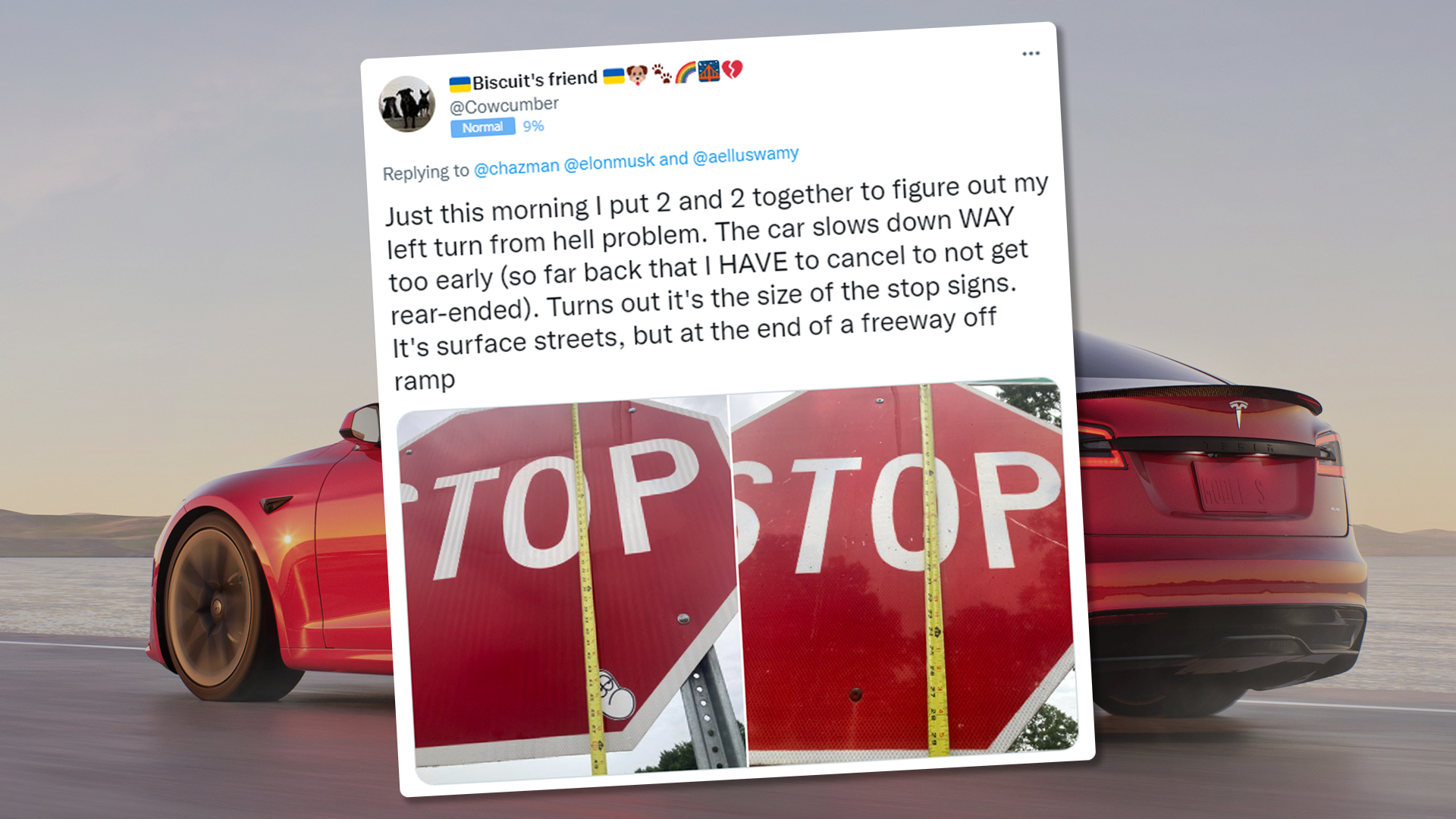

Tesla is receiving unwanted scrutiny over its latest Full Self-Driving Beta software build. From general control mishaps to complaints about its new $15,000 price tag, owners are being pretty vocal about their perceived issues online. Lately, several drivers have complained about one particularly peculiar problem that occurs when their vehicles approach a stop sign.
No, the cars aren’t running into them (this time). Instead, they’re coming to a complete stop at varying distances for seemingly no reason. This forced some owners to either disengage Autopilot or creep forward at intersections to properly make an unprotected left turn. One owner decided to dig into why they were experiencing these variations, and to their surprise, it’s apparently related to the size of the stop sign.
Twitter user Cowcumber discovered this when their Tesla came to a stop significantly shorter than it should have, but only on particular exit ramps. After pondering the problem, Cowcumber noticed that stop signs on exit ramps appeared to be larger than signs in their neighborhood, so they broke out a tape measure to confirm.
As they suspected, the stop sign on the exit ramp is, in fact, significantly larger. Many of these signs measure just over 48 inches tall, which is around 60 percent larger than the 30-inch signs in their neighborhood.
“60 percent larger to the camera gets interpreted as 60 percent closer?” asks the Tesla owner on Twitter. “I still have the slow creep problem here […] and it’ll come to a complete stop while sitting in the near lanes even if no cars are around!”
Cowcumber isn’t the first person to suspect this. Tesla owner Omar Qazi mentions this same problem in an FSD Beta test drive video that he published on YouTube on Aug. 21.

“This street that I’m driving on—Marina Boulevard, I guess—it used to have this issue with stopping at these stop signs because this street has giant stop signs on it,” said Qazi. “And so it would kind of try and stop a little bit too early because the stop signs were so big. I kind of realized, okay, the size is a big part of how it’s kind of doing that.”
So, what exactly causes this problem? Well, the official answer is unknown and The Drive could not reach out to Tesla to verify or contest these claims as the automaker dissolved its communications and public relations department some time ago. Some believe that the neural network may be incorrectly trained to recognize the size of the stop sign as a measure of where it resides in relation to the intersection.

In Qazi’s video above, you can see around the 14:30 mark that the vehicle has some trouble determining the position of the stop sign. Eventually, the Tesla places it several feet before the intersection between two parked cars; this position is incorrect, as the stop sign is actually positioned much closer to the intersection near the crosswalk. Others disagree, however, claiming that the model is built on time-based positioning and that the size of the stop sign has no effect on where the vehicle comes to a stop.
While there’s no official word on if stop signs truly do affect the stopping distance at an intersection, the statement from Cowcumber and video from Qazi show that size really could matter in this case. Could fixing this be the trick to solving Chuck’s turn?
Got a tip or question for the author? Contact them directly: rob@thedrive.com